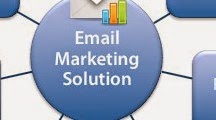May 19, 2014
prabhakardalvi
Step 1 : -
- Know current health of data, match with your ideal prospect profile; filter out what you don’t need
- Set priority and segment data : as per your email campaign plans
- Use in-house research team or outsource to a data vendor to verify existing email ids; or source new email data as per your filter criteria (company size – revenue, employee; Industry/ Line of Business, Geographic location, Prospect profile (job role, seniority, decision making authority, etc.)
Step 2:
- If you want to be doubly sure; use a test domain and test email server to check validity of email addresses before running your actual campaigns. It reduces the problem of hard bounce
- Once data is cleaned-up, monitor on-going email deliverability; remember email data, specifically Business-to-business (B2B) data gets obsolete periodically. So the tracking the state of database and refreshing periodically is required
.jpg) |
| How to Clean Large Email Contact Lists for Email Marketing Campaigns |
Step 3:
- Specific to Business-to-Consumer data; the regulations are stringent in many countries as it deals with personal data. Best way to build b2c email list is through ‘opt-in’, applying various channels like social media, PPC, Point of Sale (POS) marketing, etc.
- For both B2B and B2C; it’s utmost important to maintain a suppression list (list of email ids you don’t wish to contact) as well to honor opt-out/ unsubscribe requests (and maintain a similar list)
.jpg)
.jpg)